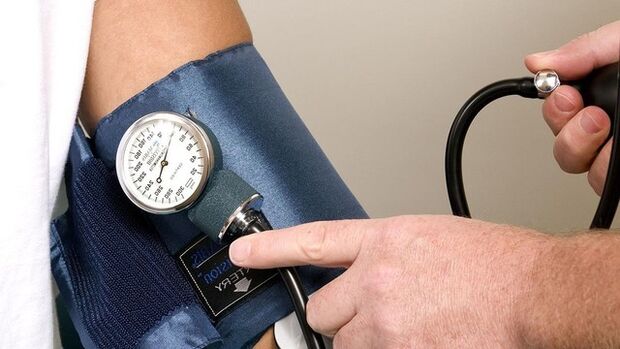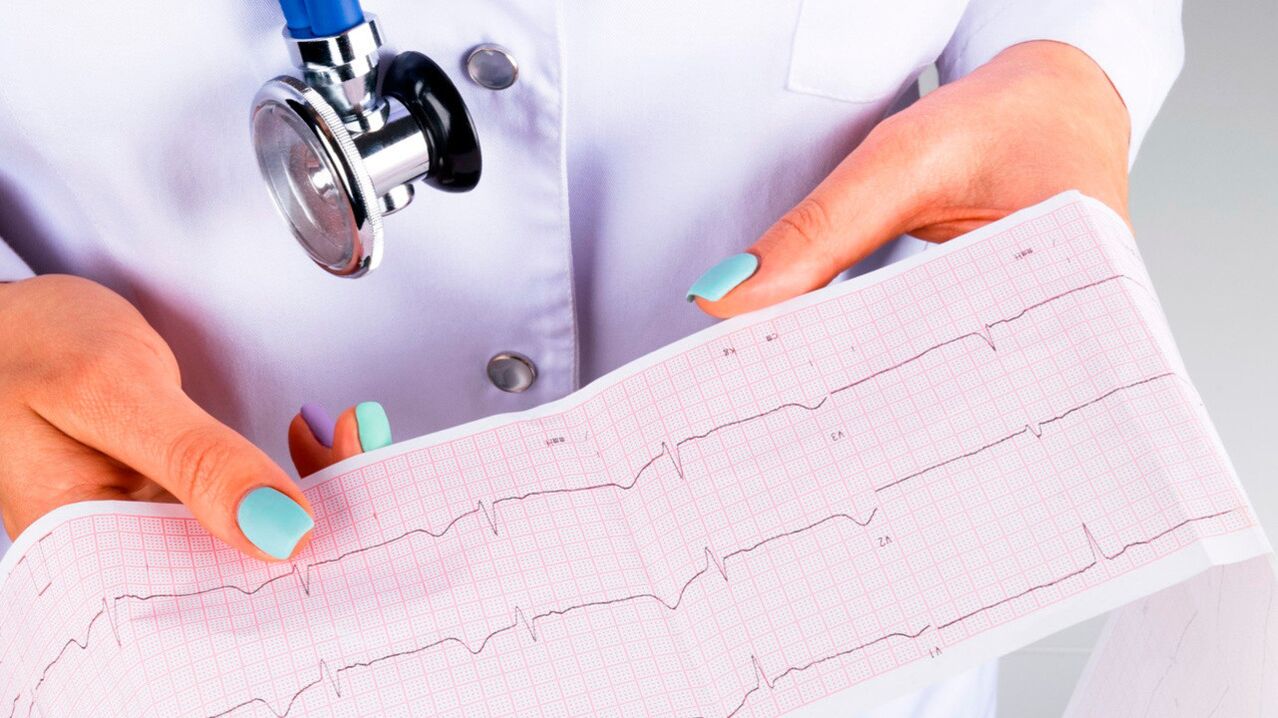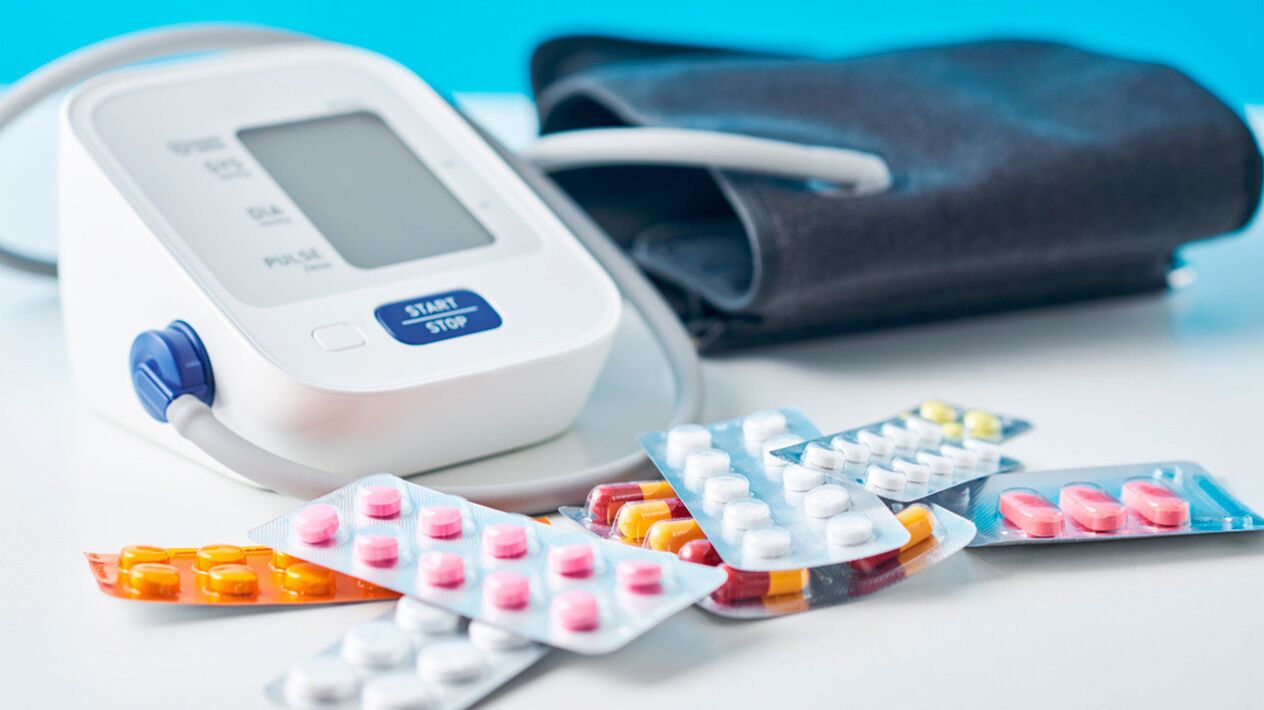
High blood pressure is one of the most common cardiovascular diseases. According to the WHO, more than 1. 1 billion people suffer from it. worldwide. High blood pressure increases the risk of developing other heart diseases. High blood pressure is one of the leading causes of death, and the disease is rapidly rejuvenating. It occurs not only in the elderly, but also in the young. Below you will find out why it appears, how to recognize it and control it.
What is high blood pressure?
It is a chronic condition in which blood pressure is high. It is written as two numbers, and the optimal value is 120/80 mm Hg. Art. The first number is the systolic pressure, which occurs when blood is ejected from the left ventricle of the heart into the aorta during systole (contraction of the heart chambers). The second number represents the diastolic pressure when the heart muscle relaxes. Blood pressure rises during physical activity and emotional excitement, but its value should be close to normal at rest. If the systolic pressure exceeds 139 mmHg with several measurements taken at different times. Art. and/or diastolic pressure greater than 90 mm Hg. Art. , diagnosed with high blood pressure.
Persistent elevation of blood pressure is linked to many factors, including excess weight and lack of physical activity, poor diet, bad habits and high levels of stress.
Causes and risk factors
Hypertension can be primary or secondary:
- primary (basic)high blood pressure is more common - according to various estimates in 85-95% of cases. Its appearance is not associated with simultaneous diseases, the pressure increases under the influence of a combination of factors;
- secondary (symptomatic)high blood pressure occurs in 5-15%. In this case, high blood pressure is one of the symptoms that can be associated with endocrine disorders, kidney diseases and disorders of large vessels.
If the regulation and maintenance of optimal blood pressure is impaired, primary hypertension occurs. The reason for its occurrence is usually constant nervous overload. During the diagnosis, it is important to establish as precisely as possible what causes high blood pressure, whether there is a secondary cause (presence of diseases that cause high blood pressure).
Several risk factors increase the chance of developing primary hypertension:
- overweight (obesity);
- insufficient activity, physical inactivity, lack of physical activity;
- alcohol consumption and smoking;
- stress, constant emotional tension;
- lack of sleep, poor quality, insomnia;
- excessive salt intake;
- improperly organized sleep and rest habits (including irregular or excessively long working hours);
- changes in hormonal levels (in women, it may be associated with taking oral contraceptives, the onset of menopause);
- hereditary factors (a total of more than 20 genes have been identified that determine the tendency to hypertension);
- Age over 65 years (the disease can also occur in young people; after 35 years it is worth having your blood pressure checked periodically);
- poor nutrition (lack of vegetables and fruits in the diet, too many foods with trans fat and saturated fat);
- kidney disease, diabetes mellitus and some other related conditions and diseases.
Many of these factors are interrelated and mutually reinforcing. Some of them can be controlled (for example, diet and diet, sleep, physical activity, body weight, alcohol consumption, smoking). It's an easy way to reduce your risk of high blood pressure or improve your well-being if you already have high blood pressure.
Classification
Two approaches are used to classify the disease: by degrees and stages. The level of high blood pressure differs from the value of the increase in blood pressure, the difference between the stages lies in the course of the disease, the number and severity of the simultaneous organic changes.
First degree
Systolic blood pressure - more than 139 and less than 159 mm Hg. Art. , and the diastolic is at the level of 90-99 mmHg. Art. With elevated values, the blood pressure can be normalized by changing the lifestyle. To do this, you need to increase physical activity, change your diet, stop bad habits and reduce your stress levels.
Second degree
In the second degree, the blood pressure values rise and reach 160-179 mmHg. Art. in systolic and 100-109 mmHg. Art. the diastole. With such values, the load on the heart increases significantly. The blood supply to the brain deteriorates, which can cause headaches and dizziness, as well as reduced performance. Changes occur in the fundus. Sclerosis of the tissues and vessels of the kidney begins, the excretory function is impaired, and kidney failure may develop. The condition of the blood vessels is deteriorating. For treatment, you need to change your lifestyle and start taking medications.
Third degree
The systolic pressure is above 180 mm Hg. Art. , diastolic - above 110 mm Hg. Art. With high blood pressure, the workload on the heart becomes too high and causes irreversible changes. Blood pressure must be continuously lowered with medication. Without it, there is a risk of acute heart failure, arrhythmia, angina pectoris, heart attack and other serious conditions. Patients with stage 3 hypertension should be under constant medical supervision. Continuous use of antihypertensive drugs is necessary.
| Arterial pressure | Systolic (mmHg) | Diastolic (mmHg) |
|---|---|---|
| Fine | < 130 | < 85 |
| In normal cases, so-called prehypertension | 130–139 | 85–89 |
| 1 - mild hypertension | 140–159 | 90–99 |
| 2 - moderate high blood pressure | 160–179 | 100–109 |
| 3 - severe high blood pressure | ≥ 180 | ≥ 110 |
Stages of high blood pressure
The disease develops gradually. There are three stages in total.
- First phase:moderate high blood pressure. Blood pressure is unstable and can fluctuate during the day. In this stage, the condition of the internal organs and the central nervous system remains normal, there are no signs of organ damage. Hypertensive crises are rare and relatively mild.
- Second stage:severe high blood pressure. In the second stage, blood pressure rises significantly, the state of health often deteriorates, and hypertensive crises worsen. At this stage, changes in the internal organs begin due to the continuously high blood pressure. Vascular disorders appear and the blood supply to the brain deteriorates. The retinal arteries narrow. Hypertrophy of the left ventricle of the heart develops, and this increases the risk of serious heart pathologies. Signs of kidney dysfunction appear (increased albumin level in the urine, increased creatinine level in the blood serum)
- Third stage:very severe high blood pressure. Blood pressure will be critically high - above 200 mm Hg. Art. for systolic and 125 mmHg. Art. the diastole. Organ changes intensify, heart failure, thrombosis of cerebral vessels, aneurysms, kidney failure and other serious conditions develop. Severe hypertensive crises often occur.
Symptoms
High blood pressure may have no symptoms for a long time, even with a significant increase in blood pressure. For this reason, you should measure your blood pressure regularly (monitoring is especially important for those over 35). You can measure your blood pressure with an automatic electronic tonometer - such devices are sold in pharmacies.
The main symptoms of high blood pressure include headache, dizziness and lightheadedness. These manifestations are associated with vasospasm and deterioration of the blood supply to the brain. Possible nosebleeds, tinnitus, vision loss, heart rhythm disorders. In severe cases of high blood pressure, you may experience weakness, chest pain, nausea, vomiting, and tremors ("muscle tremors"). Other symptoms include blurred or black spots before the eyes, trouble sleeping, palpitations, and ringing in the ears.
As the disease progresses, the visual acuity gradually decreases, the sensitivity of the arms and legs may decrease, and in severe cases paralysis is also possible. In stressful periods, against the background of nervous strain or physical activity, the symptoms may increase. They occur more often in middle-aged and elderly people. The disease is more serious if you are overweight, have bad habits, tend to overeat or are under high stress.
Consult a therapist or cardiologist if you experience regular headaches, dizziness, or vision problems, or if your blood pressure often rises when you measure your blood pressure yourself.
Diagnostics
Diagnosis is usually carried out in three directions:
- measurement of blood pressure.It is performed at intervals of several hours or every 2-3 days to determine the degree and stage of hypertension;
- identifying the causes of the disease.It is important to determine whether high blood pressure is primary or secondary (caused by other diseases). In the second case, special treatment may be required;
- general health monitoring.During the examination, the condition of the heart, cerebral vessels, fundus of the eyes and kidneys are monitored. Due to high blood pressure, the functioning of these organs is impaired. When making a diagnosis, it is important to assess their condition.
During the first meeting, the doctor conducts an assessment and collects medical history data related to the disease. Information will be required on how long the patient has suffered from high blood pressure, what his blood pressure is, whether there are symptoms of heart disease, apnea, severe snoring, whether the affected person or his close relatives have had a stroke, peripheral arterial disease, gout, diabetes, kidney disease. The doctor definitely asks questions about your lifestyle: physical activity, bad habits, diet, taking medications.
The following tests are performed in patients with arterial hypertension:
- measurement of blood pressure.They are measured several times at rest (physical activity, caffeine consumption, smoking are excluded half an hour before the measurement), the measurements are taken at different times of the day;
- general examination:measurement of height and weight, waist circumference, palpation of the abdomen, assessment of the pulsation of peripheral arteries;
- Analysis of urine.Albumin and creatinine levels are important - deviations from the norm indicate kidney dysfunction and require an ultrasound;
- blood analysisAn ultrasound of the kidneys is prescribed to check the levels of potassium, creatinine, and lipids. Assessment of lipid levels is necessary to regulate lipid metabolism to eliminate the risk of complications from the cardiovascular system;
- EKGperformed to monitor the condition of the heart when left ventricular hypertrophy is detected.

In addition, the doctor may refer the patient for a cardiological or neurological examination or an examination of the respiratory system.
Treatment of high blood pressure
Arterial hypertension is a disease that cannot be completely cured, but can be controlled. Therapy and lifestyle changes can stop high blood pressure from developing, reduce the frequency and severity of crises, and eliminate symptoms. However, the most important thing is to reduce the risks to the cardiovascular system, brain and kidneys.
Treatment begins with lifestyle changes:
- give up smoking;
- refusing to drink alcohol or significantly limiting the amount of alcohol;
- diet: adjusting the diet, reducing salt intake (less than 3. 75 g per day), increasing the amount of vegetables and fruits (ideally 5 portions per day), whole grains, dairy products, low-fat products, orcalorie intake is limited. If there are no contraindications or kidney disease, increase the consumption of foods containing potassium (spinach, beans, pumpkin, fish, milk, kefir, yogurt and others);
- increase in physical activity. Moderate exercise is recommended to promote weight loss and strengthen the cardiovascular system.
During the treatment, the blood pressure is reduced to the target values (below 130/80 mm Hg) in order to reduce the risk of complications. In case of such a decrease, constant medical monitoring is required. The tonometer used for home measurements must be calibrated regularly. In the case of diabetics, pregnant women, the elderly and the debilitated, the use of antihypertensive drugs requires special caution.
The following medicines can be used to treat high blood pressure:
- adrenergic modifiers.They reduce the activity of the sympathetic nervous system and lower blood pressure, but they can cause drowsiness and depression, so they are rarely used;
- ACE inhibitors.Reduce peripheral vascular resistance, often prescribed to diabetics;
- angiotensin II receptor blockers.Their effect is similar to ACE inhibitors, so they are not prescribed together with them. Not prescribed during pregnancy;
- beta blockers.It lowers blood pressure by slowing the heart rate;
- calcium channel blockers.They decrease total peripheral vascular resistance and may induce reflex tachycardia;
- direct vasodilators.They have a direct effect on blood vessels and are used for severe hypertension;
- diuretics.They reduce the volume of blood plasma, which lowers blood pressure, but can also cause hyperkalemia.
Important!After the examination, the therapist or cardiologist must prescribe the drugs and their dosage. Taking medicines prescribed by a doctor can be dangerous.
If your doctor prescribes medication, you should have regular check-ups to evaluate the effectiveness of the treatment and to adjust it. It is important to modify your lifestyle and restore normal health so that a minimal amount of medication is needed to control the course of your high blood pressure.

Possible complications
Due to the increased blood pressure, the walls of the arteries lose their elasticity, and the heart muscle works too hard. This increases the risk of angina, acute heart failure and heart attack. Temporary ischemic attacks and strokes are possible due to impaired blood supply to the brain. The severity of high blood pressure increases without treatment and lifestyle correction: the pressure continues to increase, which leads to damage to internal organs and deterioration of general health and well-being. Smoking, alcohol consumption, overeating, lack of physical activity and high levels of stress accelerate the development of high blood pressure and make its course more complex.
Consequences
Without treatment, high blood pressure can have serious consequences. Constant spasm of cerebral vessels leads to ischemia and stroke. They are dangerous with serious disability and even death. If the load on the heart muscle is too high, tachycardia, arrhythmia and heart failure occur. Heart attack is possible without treatment.
The severity of hypertensive crises increases, they become complicated, life-threatening and can lead to stroke, acute coronary syndrome and other serious conditions. The quality of life in the background of high blood pressure decreases sharply without proper therapy and restoration of normal health, even to the point of severe disability.
Forecast
The prognosis is favorable if the patient consults a doctor in time and takes measures to control blood pressure and factors affecting high blood pressure. In this case, the long-term consequences and serious course of high blood pressure can be avoided. Even in the case of severe arterial hypertension, treatment and lifestyle modification are necessary.
Prevention
In order to prevent high blood pressure, self-monitoring of blood pressure is recommended over the age of 35 or when symptoms of high blood pressure appear. It is important to eliminate the influence of factors that cause blood pressure to rise: you must control your diet, stop smoking and alcohol consumption, reduce stress levels, spend more time on physical activity: in short, lead a healthy lifestyle.
Conclusion
High blood pressure is a dangerous disease, but it can be controlled by maintaining normal health and reducing the risk of complications. For this, it is important to monitor the blood pressure level, control the body weight, lead a healthy lifestyle, and perform preventive tests performed by a therapist or cardiologist.






















